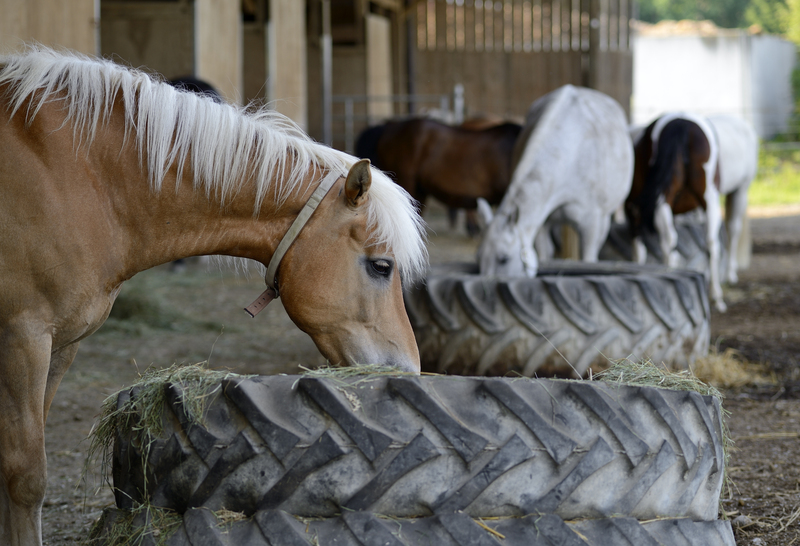From Household to Industrial: Understanding What Waste Turns Hazardous
In today's world, waste management has become a vital issue for communities, businesses, and governments alike. Not all waste is created equal: while some types can be easily recycled or composted, others pose serious threats to human health and the environment. These are known as hazardous wastes. In this comprehensive guide, we'll explore what makes waste hazardous, examine the different types found from households to large industries, and discuss safe disposal and reduction strategies.

What is Hazardous Waste?
Hazardous waste refers to any material or byproduct that can cause substantial threats to public health or the environment if not handled properly. According to the Environmental Protection Agency (EPA), hazardous waste typically has properties that make it dangerous or potentially harmful. These properties include toxicity, reactivity, corrosivity, and ignitability.
- Toxicity: Waste containing substances that are harmful or fatal when ingested or absorbed, e.g. lead or mercury.
- Reactivity: Waste that is unstable and can cause explosions or release toxic gases.
- Corrosivity: Wastes that can corrode metals or destroy living tissue.
- Ignitability: Waste that can easily catch fire, such as solvents or oils.
When we talk about what turns ordinary waste into hazardous waste, several factors come into play. These include the waste's composition, concentration of dangerous substances, and potential for environmental harm.
Household Sources: What Turns Everyday Trash into Hazardous Waste
Often, people do not realize that many common household items can become hazardous if not discarded correctly. The average household contains a surprising amount of potentially harmful substances.
Common Household Hazardous Wastes
- Paints and Solvents: Latex and oil-based paints, varnishes, strippers, and thinners can contain chemicals harmful to humans and wildlife.
- Batteries: Containing lead, cadmium, and mercury, spent batteries should never be thrown in with regular trash.
- Pesticides and Herbicides: Leftover lawn and garden chemicals can seriously contaminate soil and water.
- Cleaning Products: Many contain ammonia, bleach, or other corrosive ingredients that can hurt skin and eyes as well as the local ecosystem.
- Electronic Waste (E-waste): Outdated computers, smartphones, and televisions often house toxic elements such as lead and flame retardants.
- Light Bulbs: Especially fluorescent bulbs, which may contain mercury.
- Medications: Leftover prescription and over-the-counter drugs can contaminate water supplies and harm aquatic life.
Why Do These Materials Become Hazardous?
Household hazardous waste poses risks when it leaches into the soil, contaminates water, or is incinerated and releases toxic fumes. For example, mercury from thrown-away thermometers or bulbs can accumulate in the food chain, threatening both wildlife and human health. Paint cans and aerosol sprays, if punctured or combusted, may cause fires or explosions.
It is crucial to recognize that, while the quantities in individual homes are usually small, with millions of homes generating similar waste, the cumulative effects are profound.
Industrial & Commercial Waste: The Bulk of Hazardous Waste
Compared to households, industrial sources generate substantially more hazardous waste, both in volume and toxicity. Factories, laboratories, manufacturing plants, agricultural operations, and construction sites are key contributors.
Types of Industrial Hazardous Waste
- Chemical Waste: Includes solvents, acids, heavy metals, and other by-products of chemical manufacturing.
- Biomedical Waste: Hospitals and clinics dispose of infectious materials, sharps, body fluids, and pharmaceuticals.
- Petroleum Waste: Refineries and vehicle service stations produce sludges containing toxic hydrocarbons.
- Heavy Metals: Factories emit or absorb metals like cadmium, arsenic, mercury, and chromium, which have long-term environmental impacts.
- Asbestos: Used in construction and insulation, it is extremely harmful when inhaled.
- Radioactive Waste: Generated by nuclear power plants and certain medical treatments.
Mismanagement of industrial hazardous waste can devastate communities and ecosystems, leading to contaminated groundwater, poisoned soils, and airborne toxins causing respiratory diseases and cancers.
How Does Non-Hazardous Waste Turn Hazardous?
Some industrial and commercial processes create waste that's not initially hazardous, but becomes problematic due to contamination or chemical reactions:
- Mixing non-hazardous waste with hazardous materials can render the entire batch hazardous (e.g. used shop towels contaminated by solvent spills).
- Certain waste products become dangerous over time when stored improperly, exposed to heat, moisture, or sunlight.
- Biodegradable waste (like food from large cafeterias) mixed with chemicals becomes hazardous.
The Environmental and Health Impacts of Hazardous Waste
Understanding what waste turns hazardous is vital because of its profound impacts on ecosystems and public health.
Environmental Effects
- Soil Contamination: Leaks from waste sites pollute soil, affecting plant growth and food safety.
- Water Pollution: Toxic runoff can contaminate rivers, lakes, and groundwater, endangering drinking water sources and aquatic life.
- Air Pollution: Incineration, accidental fires, or evaporation can release dangerous compounds like dioxins or VOCs (volatile organic compounds).
- Wildlife Threats: Animals ingest or absorb toxins, leading to illness, reproductive issues, or death.
Human Health Risks
- Direct Exposure: Handling hazardous waste without proper protection can cause burns, poisoning, respiratory problems, or cancers.
- Long-Term Effects: Chronic exposure has been linked to birth defects, neurological disorders, and immune system suppression.
- Bioaccumulation: Toxins such as mercury and PCBs accumulate in the bodies of humans and animals, compounding harm over time.
Effective management of hazardous waste--from household to industrial levels--is key to minimizing these risks.
Disposal and Management: Keeping Hazardous Waste in Check
Because hazardous waste poses such a broad range of dangers, its management is strictly regulated. The process involves identification, collection, transportation, treatment, and final disposal.
How Is Hazardous Waste Identified?
In the United States, the EPA provides lists and testing procedures to determine whether a waste is hazardous. Criteria include:
- F-list: Wastes from common industrial processes (e.g., solvents).
- K-list: Waste from specific industries (e.g., petroleum refining sludges).
- P-list and U-list: Discarded chemical products (e.g., certain pesticides).
Testing for characteristics, such as flammability, reactivity, and toxicity through procedures like TCLP (Toxicity Characteristic Leaching Procedure), helps ensure proper handling.
Safe Storage and Transportation
Once identified, hazardous wastes are stored in specially designed containers, often lined and sealed to prevent leaks. They are labeled, documented, and transported by certified companies using vehicles equipped to contain spills and accidents.
Methods of Treatment and Disposal
- Incineration: Burns waste at very high temperatures to destroy toxic components; emissions are scrubbed to reduce air pollution.
- Landfilling: Special hazardous waste landfills are engineered with multiple liners, leachate systems, and monitoring wells.
- Chemical Treatment: Neutralizes acids or bases, oxidizes toxic organics, and immobilizes heavy metals to make them less hazardous.
- Biological Treatment: Uses microorganisms to break down certain organic wastes, though not suitable for all hazardous materials.
- Recycling and Recovery: Some materials, like used solvents or metals, can be reclaimed and reused, reducing environmental impact.
Hazardous Waste Laws and Regulations
Most countries have rigorous rules to manage hazardous waste. In the US, the Resource Conservation and Recovery Act (RCRA) governs the entire lifecycle of hazardous materials--sometimes called "cradle to grave" regulation. Businesses must track and report how much hazardous waste they generate and dispose of, ensuring that no waste is dumped illegally or unsafely.
The EPA also partners with local governments and non-profits for community "household hazardous waste collection" days, making it easier for residents to dispose of dangerous items safely.
How Can You Reduce Hazardous Waste?
Everyone can do their part in minimizing what waste turns hazardous, starting at home and extending to businesses and industries.
Tips for Households
- Buy Only What You Need: Smaller quantities of paint, cleaning supplies, or pesticides minimize leftovers.
- Opt for Non-Toxic Alternatives: Use vinegar, baking soda, and lemon as gentle cleaners instead of harsh chemicals.
- Participate in Collection Programs: Check for special disposal events for electronics, paints, and chemicals.
- Recycle Batteries and Electronics: Look for drop-off points for recycling rather than throwing these in the trash.
- Never Pour Chemicals Down the Drain: This contaminates water and harms aquatic life; always follow disposal instructions.
Best Practices for Businesses and Industry
- Inventory Management: Avoid overstocking hazardous materials to reduce surplus waste.
- Hazardous Waste Segregation: Separate dangerous from non-dangerous materials for proper handling.
- Employee Training: Ensure staff know how to store, use, and dispose of hazardous substances safely.
- Adopt Green Manufacturing: Substitute hazardous chemicals for safer options where possible.
- Work with Licensed Disposal Firms: Partner with certified waste handlers to comply with all regulations.

The Future of Hazardous Waste Management
As technology advances, new materials and chemicals enter the market, creating both opportunities and challenges. The rise in electronic waste, pharmaceuticals, and nanomaterials brings questions about how to manage emerging hazardous wastes. At the same time, research is delivering safer substitutes for old hazardous materials and smarter tracking of waste streams using digital and AI technologies.
A sustainable future requires continued vigilance in how we identify, handle, and reduce hazardous waste, from household to industrial scale. By staying informed and proactive, individuals, companies, and governments can protect both people and planet.
Conclusion: Recognize and Reduce What Waste Turns Hazardous
From household chemicals to industrial by-products, hazardous waste is a fact of modern life. Proper identification, careful handling, and responsible disposal are essential steps for protecting health and the environment. Whether cleaning out your garage or running a major factory, being aware of what waste turns hazardous--and taking steps to reduce its creation--makes our communities safer and more sustainable.
If you have hazardous waste at home, reach out to your local municipality for safe disposal options. For businesses, make compliance and environmental stewardship core parts of your operations. Together, we can build a safer, cleaner future--one responsible action at a time.